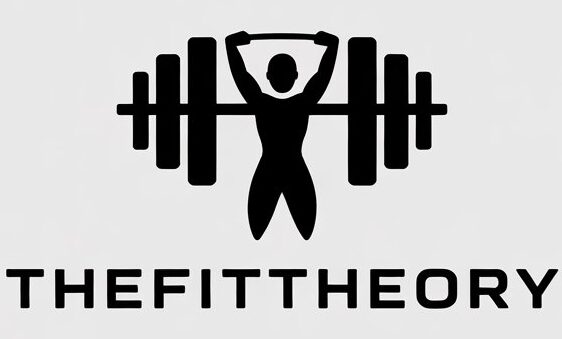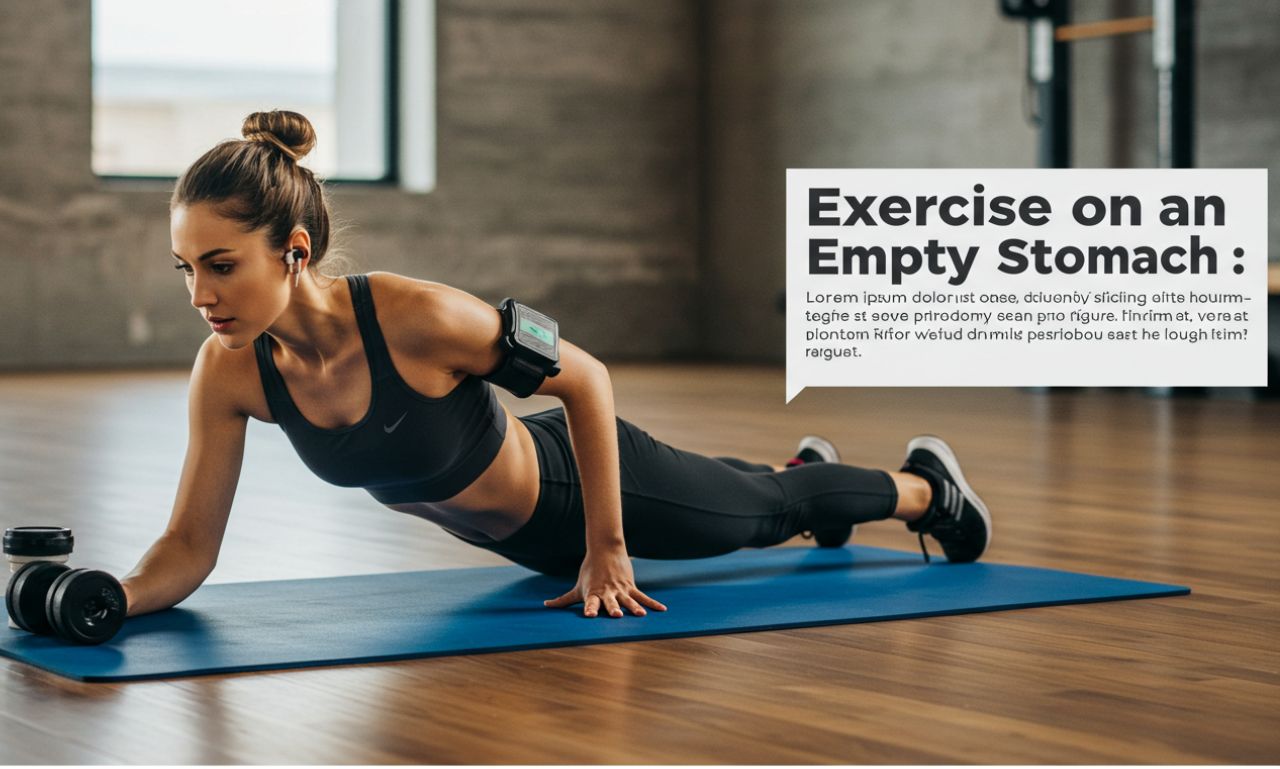Ever woken up, laced up your sneakers, and wondered if you should hit the gym before breakfast? Exercise on an empty stomach, often called fasted exercise, is a hot topic among fitness enthusiasts. As a personal trainer who’s experimented with morning workouts both fueled and fasted, I’ve seen firsthand how this approach can spark fat loss but also demands caution. The debate rages: does skipping a pre-workout meal supercharge results, or is it a recipe for burnout?
This guide dives into exercise on an empty stomach, exploring its science, benefits, and potential pitfalls. We’ll cover who it’s for, safe ways to try it, and how it fits into your fitness goals. Drawing from my own trials—yes, I’ve felt the highs and lows of fasted runs—you’ll get practical tips to make it work. Let’s unravel the truth and get you moving confidently!
What Is Fasted Exercise, and Why Try It?
Exercise on an empty stomach involves working out after fasting, typically overnight, with no food intake for 8-12 hours. Your body, low on glycogen (stored carbs), may tap into fat stores for energy. This concept, rooted in the idea of fat-burning efficiency, gained traction through fitness communities like CrossFit and studies in journals like the Journal of Applied Physiology.
Why do it? A 2023 study from the International Journal of Sports Medicine found fasted cardio can increase fat oxidation by up to 20% compared to fed workouts. I tried fasted morning jogs for a month and noticed sharper focus and slight fat loss, though energy dipped some days. It’s not for everyone, but it suits those chasing fat loss or metabolic flexibility.
Common misconception: fasted exercise magically melts fat. Reality? It’s one tool among many—diet and consistency matter more.
Benefits of Exercising on an Empty Stomach
Exercise on an empty stomach offers unique perks, especially for fat loss and metabolic health. Here’s why it’s worth considering:
- Enhanced Fat Burning: With low glycogen, your body burns more fat for fuel. A 2022 Sports Medicine study showed fasted exercise boosts fat oxidation during low-to-moderate intensity workouts.
- Improved Insulin Sensitivity: Fasted workouts may enhance how your body handles blood sugar, per a 2024 Diabetes Care study, reducing risks of type 2 diabetes.
- Mental Clarity: Many, including me, report sharper focus during fasted sessions, possibly due to ketone production.
In my experience, fasted yoga sessions left me energized, not drained. However, benefits depend on workout type and individual health—high-intensity sessions may need fuel.
Risks and Downsides to Consider
Fasted exercise isn’t risk-free. Low energy can lead to poor performance or injury. A 2023 Journal of Strength and Conditioning Research study noted reduced strength output in fasted weightlifting sessions.
- Low Energy and Dizziness: Without fuel, you might feel lightheaded. I hit a wall during a fasted HIIT session once—lesson learned.
- Muscle Loss Risk: Prolonged fasted exercise, especially intense, may break down muscle for energy.
- Not for Everyone: Those with diabetes or low blood sugar should avoid it, as should pregnant individuals.
Always listen to your body. If you feel weak, stop. Consult a doctor if you have health conditions.
Who Should Try Fasted Exercise?
Exercise on an empty stomach suits specific groups but isn’t universal. Ideal candidates:
- Healthy adults aiming for fat loss.
- Those with stable blood sugar and no medical restrictions.
- People doing low-to-moderate cardio, like jogging or cycling.
Avoid if you:
- Have diabetes, hypoglycemia, or other metabolic issues.
- Are pregnant or recovering from illness.
- Plan high-intensity workouts like sprinting or heavy lifting.
I found fasted runs worked best for me at 60-70% effort. If you’re new, start with short, easy sessions to test your response.
Best Types of Exercise for Fasted Workouts
Not all workouts pair well with fasting. Stick to these for best results:
Low-to-Moderate Cardio
- Jogging or Walking: 30-45 minutes at a steady pace maximizes fat burn without draining energy.
- Cycling: Use a stationary bike for 20-30 minutes.
- Yoga or Pilates: Gentle flows enhance flexibility and burn fat.
Bodyweight Circuits
- Squats, Push-Ups, Planks: Low-impact, scalable moves. Do 3 sets of 10-15 reps.
- Jumping Jacks: Boost heart rate without overtaxing.
Avoid heavy weightlifting or HIIT in fasted states—save those for fed days. My fasted yoga sessions felt smoother than sprint attempts, which left me shaky.
How to Safely Exercise on an Empty Stomach
Safety first—here’s how to do it right:
- Start Small: Begin with 15-20 minute sessions, like a brisk walk.
- Hydrate: Drink water or black coffee (no sugar) pre-workout. I sip water to avoid dehydration.
- Warm Up: 5 minutes of dynamic stretches prevents injury.
- Monitor Intensity: Keep heart rate at 50-70% max (220 minus your age).
- Listen to Your Body: Stop if dizzy or weak. I carry a snack like a banana for emergencies.
- Refuel Post-Workout: Eat protein and carbs within 30 minutes—think eggs and toast.
A 2024 Nutrition Journal study emphasizes post-workout nutrition to preserve muscle. My routine: fasted walk, then a protein shake.
Sample Fasted Workout Routine
Try this beginner-friendly 20-minute routine:
- 5 min Warm-Up: Arm circles, leg swings.
- 10 min Cardio: Brisk walk or light jog.
- 5 min Bodyweight: 10 squats, 8 push-ups, 30-sec plank (repeat twice).
Do 3-4 times weekly. I started with this, gradually adding time as stamina grew. Advanced? Extend cardio to 30 minutes or add lunges.
Nutrition Tips to Complement Fasted Exercise
Fasted workouts need smart nutrition to shine:
- Post-Workout Meal: 20-30g protein, 30-50g carbs (e.g., chicken and rice).
- Hydration: 2-3 liters water daily.
- Balanced Diet: Include veggies, lean proteins, healthy fats. Avoid sugary snacks.
A 2023 Journal of the International Society of Sports Nutrition study found post-workout protein boosts recovery by 25%. My go-to: Greek yogurt with berries after fasted cardio.
Common Misconceptions About Fasted Exercise
Myth: Fasted exercise burns more overall fat. Truth: Total calorie burn matters more than timing. A 2022 Obesity Reviews study found no significant long-term fat loss difference between fasted and fed exercise.
Myth: It’s always safe. Truth: Not for those with medical conditions or during intense workouts.
Myth: You’ll lose muscle. Truth: Short fasted sessions with proper refueling preserve muscle. My fasted runs never cost me strength when I ate well post-workout.
Advanced Tips for Fasted Exercise Enthusiasts
- Cycle Fasted Workouts: Alternate fasted and fed days to balance energy.
- Use BCAA Supplements: May reduce muscle breakdown during longer sessions.
- Track Performance: Use apps like MyFitnessPal to monitor energy and progress.
- Try Intermittent Fasting: Pair with 16:8 fasting for enhanced fat burn.
I experimented with BCAA during fasted cycling—energy stayed steady longer.
FAQ
Is it safe to exercise on an empty stomach?
Yes, for healthy adults doing low-to-moderate exercise, with proper hydration.
Does fasted exercise burn more fat?
It increases fat oxidation, but total fat loss depends on calorie deficit.
What are the best exercises for fasted workouts?
Jogging, walking, yoga, or bodyweight circuits like squats and planks.
Can I do HIIT on an empty stomach?
Not ideal—HIIT needs energy; save it for fed states.
How long should I exercise fasted?
Start with 15-30 minutes; extend to 45 as you adapt.
Who should avoid fasted exercise?
Those with diabetes, low blood sugar, or pregnancy.
What should I eat after fasted exercise?
Protein and carbs, like eggs and toast, within 30 minutes.
Conclusion
Exercise on an empty stomach can boost fat burning and mental clarity, but it’s not a one-size-fits-all solution. With low-to-moderate cardio or bodyweight moves, proper hydration, and post-workout nutrition, you can safely try it. My fasted morning walks transformed my energy and focus—start small and listen to your body. Consult a doctor if unsure, and track your progress. Ready to give it a shot? Lace up and start your fasted journey today!

